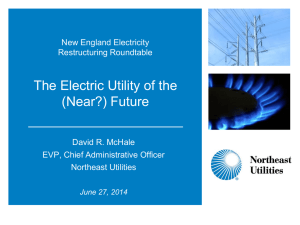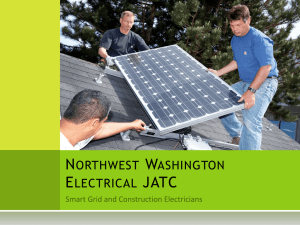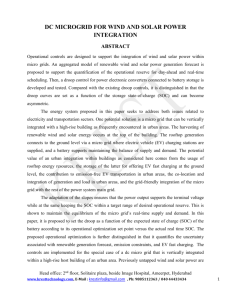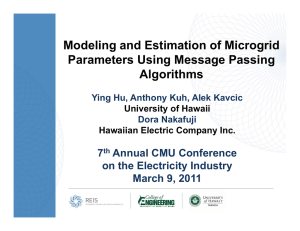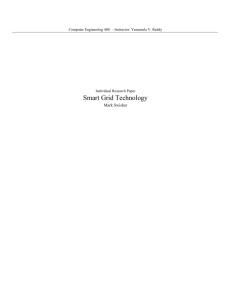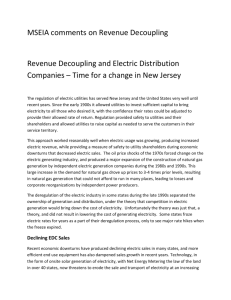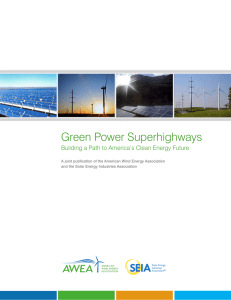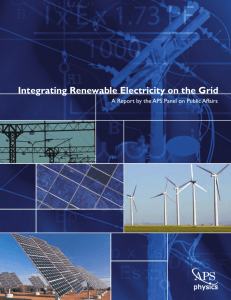Citizen`s Glossary to the Energy Sector Base
advertisement
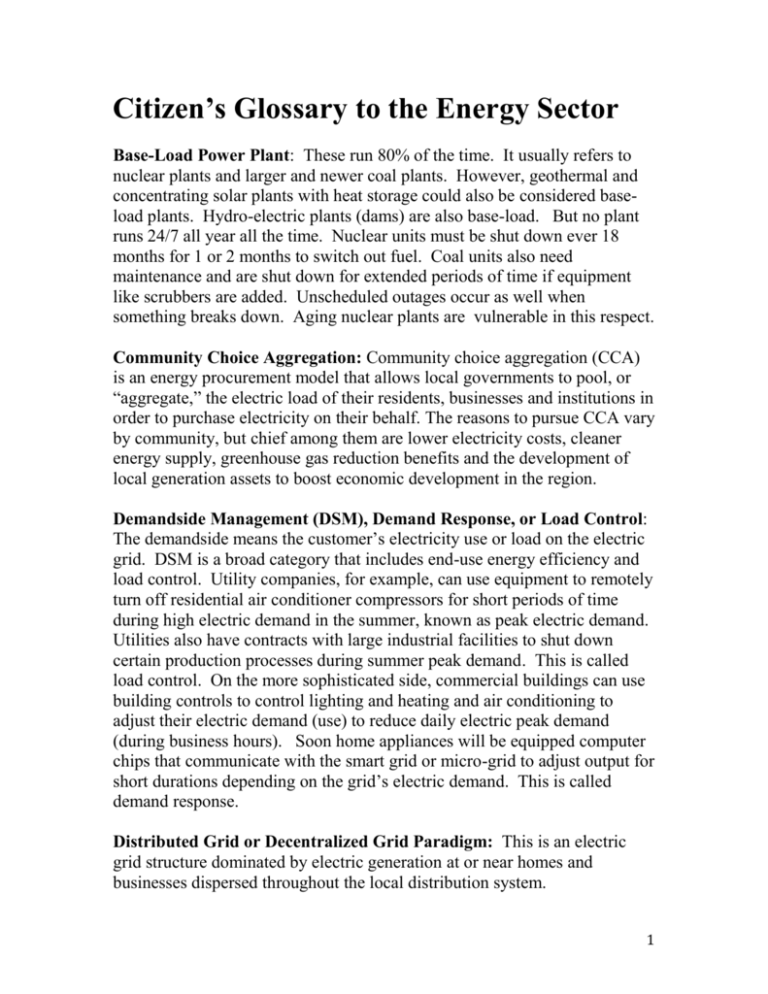
Citizen’s Glossary to the Energy Sector Base-Load Power Plant: These run 80% of the time. It usually refers to nuclear plants and larger and newer coal plants. However, geothermal and concentrating solar plants with heat storage could also be considered baseload plants. Hydro-electric plants (dams) are also base-load. But no plant runs 24/7 all year all the time. Nuclear units must be shut down ever 18 months for 1 or 2 months to switch out fuel. Coal units also need maintenance and are shut down for extended periods of time if equipment like scrubbers are added. Unscheduled outages occur as well when something breaks down. Aging nuclear plants are vulnerable in this respect. Community Choice Aggregation: Community choice aggregation (CCA) is an energy procurement model that allows local governments to pool, or “aggregate,” the electric load of their residents, businesses and institutions in order to purchase electricity on their behalf. The reasons to pursue CCA vary by community, but chief among them are lower electricity costs, cleaner energy supply, greenhouse gas reduction benefits and the development of local generation assets to boost economic development in the region. Demandside Management (DSM), Demand Response, or Load Control: The demandside means the customer’s electricity use or load on the electric grid. DSM is a broad category that includes end-use energy efficiency and load control. Utility companies, for example, can use equipment to remotely turn off residential air conditioner compressors for short periods of time during high electric demand in the summer, known as peak electric demand. Utilities also have contracts with large industrial facilities to shut down certain production processes during summer peak demand. This is called load control. On the more sophisticated side, commercial buildings can use building controls to control lighting and heating and air conditioning to adjust their electric demand (use) to reduce daily electric peak demand (during business hours). Soon home appliances will be equipped computer chips that communicate with the smart grid or micro-grid to adjust output for short durations depending on the grid’s electric demand. This is called demand response. Distributed Grid or Decentralized Grid Paradigm: This is an electric grid structure dominated by electric generation at or near homes and businesses dispersed throughout the local distribution system. 1 Energy Efficiency Portfolio Standard (EEPS): A state or federal policy (only at the state level now) whereby utility companies have to reduce their electric demand through energy efficiency measures by a percent of their total sales per year. Externalities: These are the negative public health consequences and environmental damage caused by the electric power sector that do not appear in the ratepayer bill. Costs can be assigned to these impacts. The annual externality costs of coal, for instance, range from about $170 to $500 billion. These costs are born by the public and not by energy companies. Feed-In Tariff: State, federal, or utility policy that pays customers for the power they generate from solar PV. Generally a rate is set so that the customer not only covers the cost of the panels but receives a profit on top of that, much like ratepayers pay to utilities. Due to state/federal jurisdicational issues, design of these programs at the state level can be complicated. Paying a customer is akin to the wholesale market where the federal government has jurisdiction. Microgrid: Consists of a self-sufficient small distribution that can operate independently from the transmission system or local distribution system. College campuses, subdivisions, neighborhoods, government complexes, military bases can all use a microgrid design. Net Metering: State or public utility commission policy that allows customers to connect solar PV to the distribution system and defray their energy usage. The power they produce is reflected on their electric meter. Customers are not paid. The benefit is in reducing their bills through using less power. Reliability: Is keeping the lights on by keeping the flow of electricity stable. Renewable Electricity Standard (RES) or Renewable Energy Standard or Renewable Portfolio Standard (RPS): A state or federal policy (only at the state level now with 29 states with an RES and 8 states for renewable energy goals) whereby utility companies have to provide a percentage of their power generation to customers with renewable power. RESs have been the main drivers of renewable investment in the US. 2 Resiliency: Is designing an electric grid that can withstand the changing precipitation patterns, drought, and severe storms induced by climate change. The modern grid design and micro-grids are much more resilient than the obsolete electric grid design, for example. Smart Grid: This is the telecommunications technology that goes into creating the modern electric grid or micro-grid. It is characterized by twoway communication between the grid operator and the customer (home or business) so that electric generation and electric demand can be properly balanced to maintain grid reliability (keeping the lights on). Subsidies: Subsidies are taxpayer dollars designated to support an energy technology or industry. They are in the form of taxpayer funded research and development at the DOE, tax credits or deductions. Historically, the fossil fuel and nuclear industries have received the bulk of taxpayer support in the US. However, solar PV and wind technology will soon not need taxpayer support while coal-fired power and nuclear power cannot survive without it. Third Party Financing: This generally pertains to solar PV. Some companies like SolarCity install panels on homes and businesses at no upfront charge and the owner pays the third party financier through savings on the bill. 3


